At a glance: Blue butterflies owe their vivid color mostly to structural coloration—microscopic wing scales that reflect blue wavelengths. Below are 9 standout “blues,” each with how to identify, where to find, host plants, flight season, and conservation notes, plus field tips for watching and photographing them responsibly.
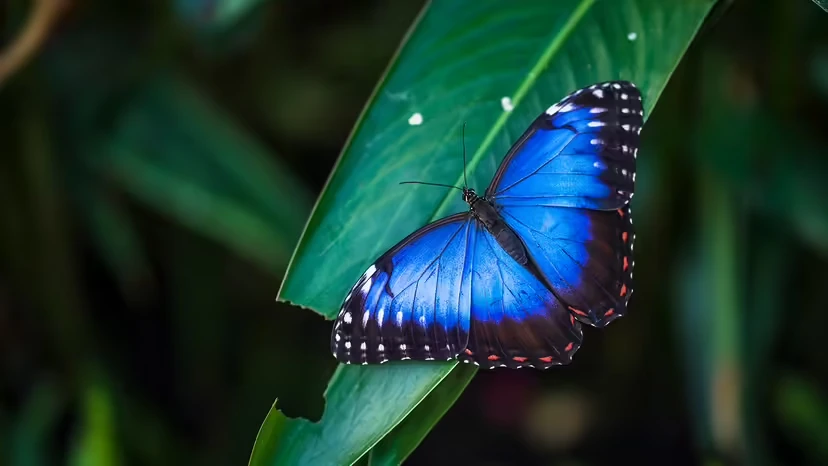
Key ID: Dazzling electric blue upperside with black margin; underside brown with large eye spots. Huge: 13–18 cm (5–7 in) wingspan. Females duller.
Range & habitat: Lowland and foothill tropical forests of Central & South America; edges and light gaps.
Host & diet: Larvae on various host trees (often Fabaceae); adults feed on rotting fruit/sap.
When to see: Year-round in the tropics; most obvious on sunny late mornings.
Notes: Often rests with wings closed; the iconic “blue flash” appears during takeoff/glide.
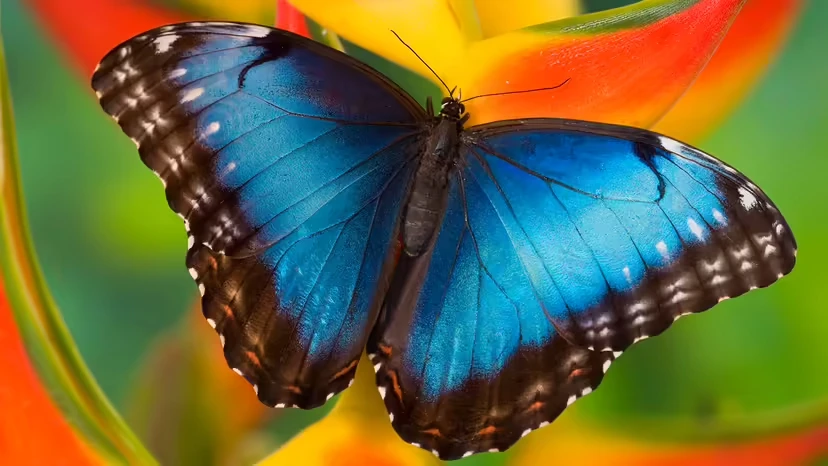
Key ID: Male sky-blue upperside; female brown with white-rimmed spots; ~2.5 cm (1 in) wingspan.
Range & habitat: Willamette Valley, Oregon (USA)—open prairie remnants with lupines.
Host: Kincaid’s lupine (Lupinus oreganus)—critical for oviposition and larvae.
When to see: Spring to early summer (local).
Conservation: Endangered; recovery hinges on prairie restoration, lupine re-establishment, and invasive control.
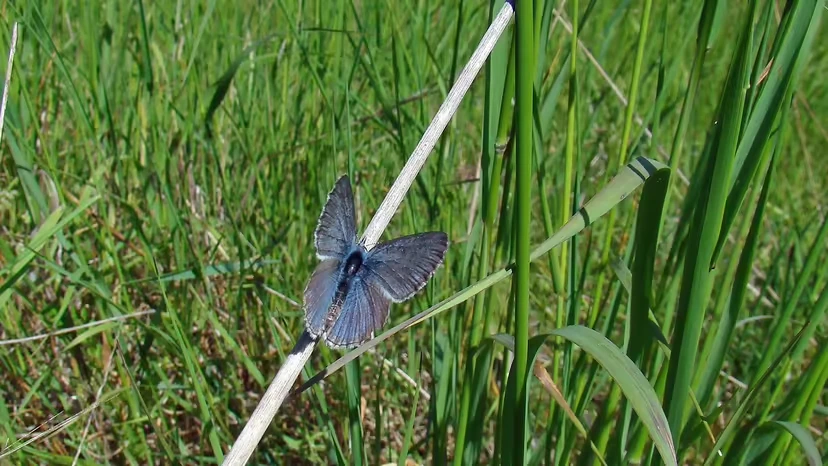
Key ID: Cool silvery-blue male upperside; neat black spots on underside; small size.
Range & habitat: Widespread in North American grasslands, barrens, and open sandy sites.
Host: Mostly Fabaceae (and regionally some Polygonaceae).
When to see: Single spring/early summer brood, usually May–June.
Notes: Best found around low floral patches in calm, sunny conditions.
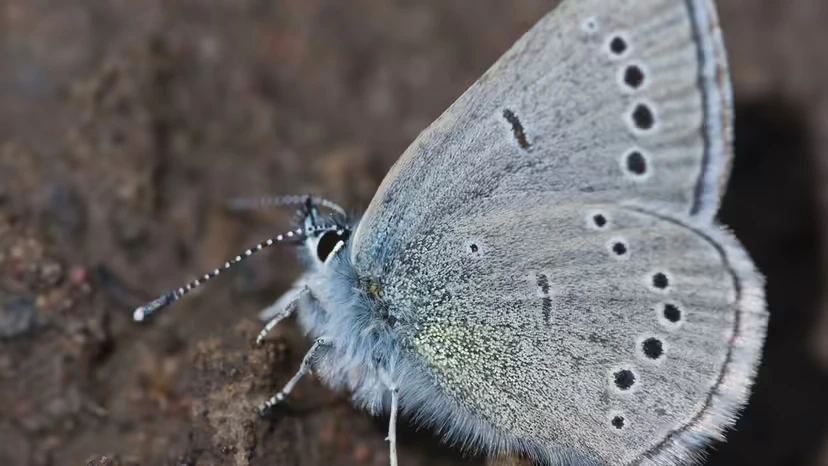
Key ID: Males vivid bright blue with narrow black border; females often brown with orange lunules and white fringe.
Range & habitat: Europe to Western Asia; tolerant of meadows, road verges, brownfields.
Host: Various clovers/medics (Fabaceae).
When to see: Multi-brooded late spring to autumn.
Notes: Communal roosting at dusk offers great photo opportunities.
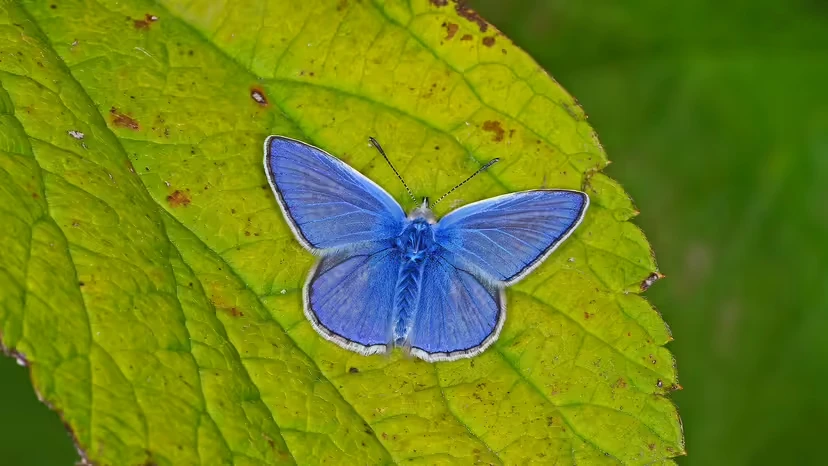
Key ID: Tiny tail filaments on hindwings; males blue, females grayish-blue; underside with clear black spots.
Range & habitat: North America, common in lawns, lots, edges, and weedy fields.
Host: Legumes (clovers, vetches, etc.).
When to see: Spring through summer (multiple broods).
Notes: Look for low nectar sources; approach slowly from behind and above.
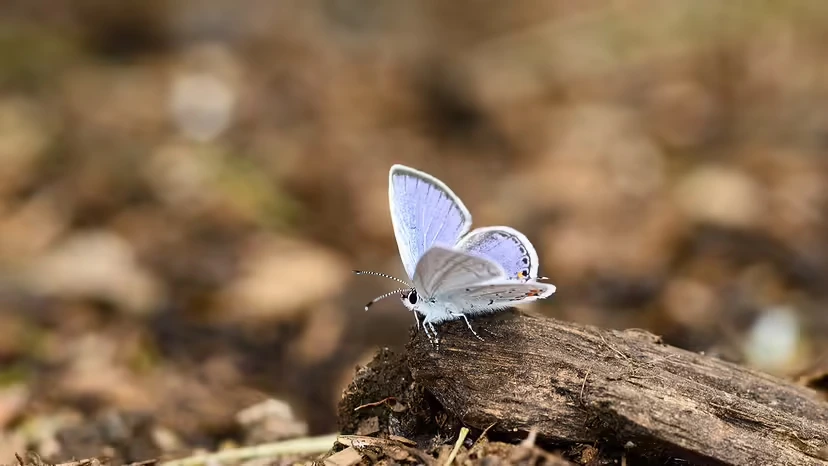
Key ID: Males bright blue; females brown with bluish suffusion; ~2.5 cm (1 in).
Range & habitat: Northeastern & Upper Midwest USA—oak-pine barrens and sandy openings.
Host: Wild lupine (Lupinus perennis)—sole larval host.
When to see: Bivoltine (spring and summer flights).
Conservation: Endangered; success depends on keeping sites open, sunny, and lupine-rich via fire/grazing/mowing regimes.
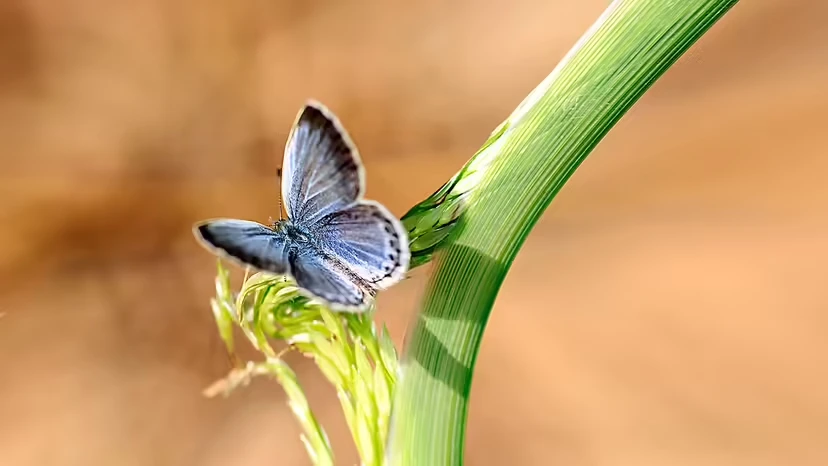
Key ID: Males an intense, ultra-clean sky blue with crisp white fringe; females brown.
Range & habitat: Southern Europe, tied to chalk/limestone grasslands.
Host: Typically horseshoe vetch (Hippocrepis comosa) and other Fabaceae.
When to see: Regional multi-brooded flights; numbers track grazing pressure and sward height.
Notes: Search warm, short-turf slopes with abundant flowers.
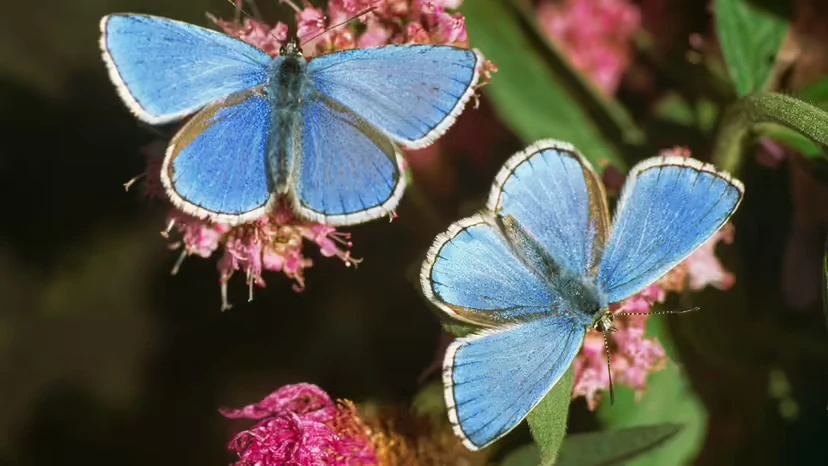
Key ID: Pale to bright powder-blue males with white fringe; females brown.
Range & habitat: Western USA—coastal dunes, foothills, and montane openings.
Host: Primarily lupines/legumes.
When to see: Spring–summer (local variation).
Notes: Often patrols along sunny south-facing edges and roadcuts.
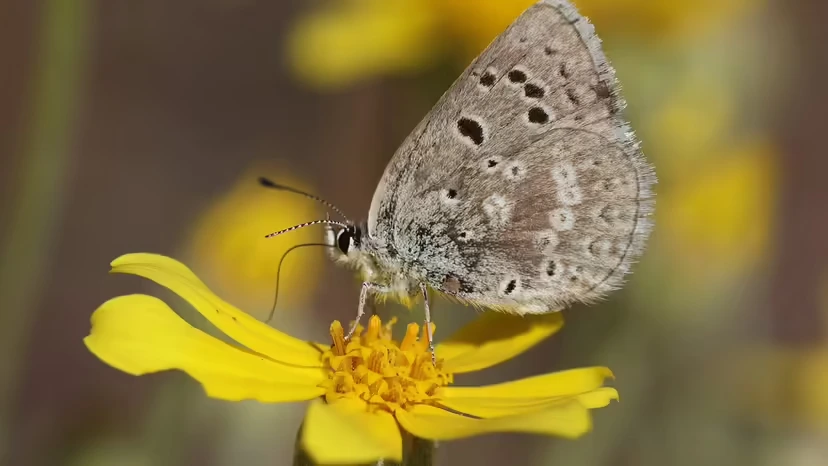
Key ID: Male upperside blue; distinct green-tinted underside; females largely brown.
Range & habitat: Europe to Western/Central Asia in sunny flower-rich grasslands.
Host: Favours Fabaceae (varies locally).
When to see: Spring peak.
Notes: Side- or back-lighting brings out the green undersurface sheen.
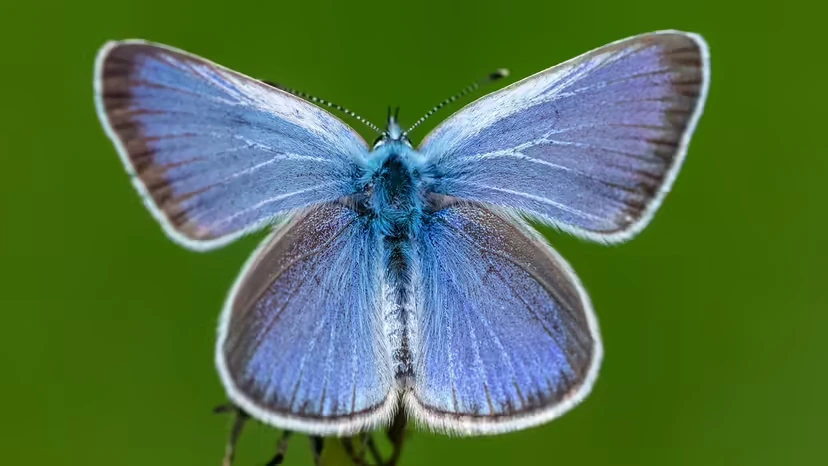
Light: Early/late side-light enhances metallic blues; midday blows highlights.
Approach: Move slowly from rear/above while the butterfly is nectaring or basking.
Do no harm: Stay on paths, avoid trampling host plants (especially lupines), and don’t handle or net for photos.
Log useful data: Date, location, habitat, host plant, and clear dorsal/ventral shots help with ID and contribute to citizen-science databases.
Most “blue” butterflies aren’t blue because of pigment. Their scales form micro-/nano-structures that selectively reflect blue light via interference and scattering—hence the vivid, angle-dependent “flash.”
Habitat management: Keep grasslands open, sunny, and flower-rich with light grazing/mowing timed outside peak flights.
Host plant recovery: Re-establish lupine/clover belts; control shading invasive shrubs.
Community science: Share records to regional platforms with photos + host info to improve monitoring.
| Species | Signature Blue | Fast ID | Primary Hosts | Best Season |
|---|---|---|---|---|
| Blue Morpho | Electric, mirror-like blue | Huge; brown eye-spotted underside | Various trees (often Fabaceae) | Year-round (tropics) |
| Fender’s Blue | Sky-blue male | Tiny prairie blue; females brown-spotted | Kincaid’s lupine | Spring–early summer |
| Silvery Blue | Icy silvery male | Neat black underside spots | Legumes (some Polygonaceae) | Late spring–early summer |
| Common Blue | Bright sky blue male | Females brown with orange lunules | Clovers/medics | Late spring–autumn |
| Eastern Tailed-Blue | Blue/gray-blue | Hindwing tails | Legumes | Spring–summer |
| Karner Blue | Bright blue male | Two broods; sandy barrens | Wild lupine | Spring & summer |
| Adonis Blue | Intense pure sky blue | Chalk grassland specialist | Horseshoe vetch, etc. | Multi-brooded; regional |
| Boisduval’s Blue | Powder-blue male | White fringe; western USA | Lupines/legumes | Spring–summer |
| Green-underside Blue | Blue top, green bottom | Strong blue-green contrast | Fabaceae | Spring |
animal tags: blue butterflies
We created this article in conjunction with AI technology, then made sure it was fact-checked and edited by a Animals Top editor.